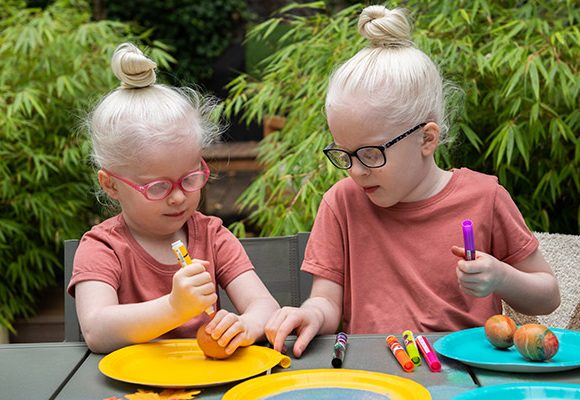Area 9: Health: Social, Emotional, Mental and Physical Wellbeing


Providing targeted teaching and support to facilitate the development of the mental, emotional, social and physical wellbeing of children and young people.
This area of the framework recognises that children and young people with vision impairment need targeted teaching to support the development of their mental and emotional resilience in a world that should be inclusive (Area 1), as well as their mental, emotional, social and physical wellbeing. This area is important for all children and young people with vision impairment, across the full spectrum of developmental and communication stages. This area includes working with the family of the child/young person, as well as providing support to professionals to ensure the needs of the child/young person are understood.
For more information regarding this element of the framework, please download the Curriculum Framework for Children and Young People with Vision Impairment (CFVI) and accompanying guidance.
Examples of targeted intervention approaches
- Access to specialist support, such as mentoring or counselling. This should include support for children and young people across a wide range of developmental and communication stages, and those whom English/Welsh is not their first language.
- Supporting early attachment and relationship building, emotional development and emotional resilience, including signposting to other services. This includes supporting the child/young person to understand different types of emotions and knowing how to respond if things go wrong.
- Developing self-advocacy and problem solving skills.
- Self-confidence, self-efficacy and agency, ensuring children and young people with vision impairment feel that they can have an influence and impact on their world and on the decisions that are made regarding their education and life.
- Self-awareness, e.g. recognising and understanding anxiety and depression.
- Self-esteem, recognition of strengths.
- Social skills, including awareness of social norms and awareness of non-verbal cues which may be missed and confidence to interact with others independently.
- Personal identity, and the potential benefits of meeting others with vision impairment.
- Understanding of vision impairment, including being able to:
- communicate with others about their vision impairment and how it affects their experiences, needs and requirements;
- respond to questions regarding their vision impairment;
- correct assumptions others make about their needs and experiences;
- participate in health related appointments as independently as possible.
- Acceptance of vision impairment – establishing one’s own identity in relation vision impairment and disability.
- Making and maintaining relationships (attachments, familial, peer and romantic).
- Sex education.
- Participation in sport/social activities, including supported access to disability sports groups for children/young people with complex physical/learning/VI needs.
- Personal safety – keeping yourself safe as an individual with a vision impairment.
Use of resources in practice
When using resources signposted via or downloaded from RNIB Bookshare, consideration should be given to any health and safety risks that might be involved and it is the responsibility of the user of these resources to undertake an appropriate risk assessment where applicable. RNIB assumes no responsibility or liability to the extent permitted by law for any injury, loss or damage incurred as a result of any use or reliance upon the information and material contained within or downloaded from RNIB Bookshare.
Externally Linked Resources (by topic)
- Developing emotional resilience
- Developing Self-Advocacy and Problem Solving Skills
- Personal identity, understanding and acceptance of VI
- Social skills
- Making relationships and sex education
- Participation in sport/social activities, including supported access to disability sports groups for children/young people with complex physical/learning/VI needs


